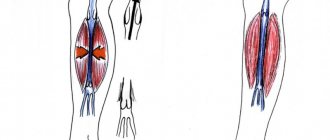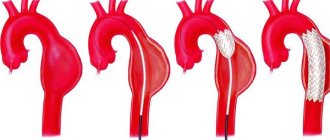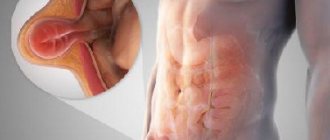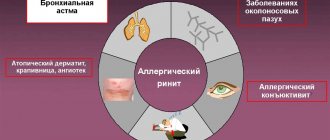A third of the world's population suffers from inflammatory processes in the kidneys. But not many people know that these problems, for the most part, are associated with pyeloectasis of the right kidney and only sometimes - with the left. With this anomaly, the renal pelvis expands. This happens due to the accumulation of fluid in it, which then travels through the ureters to the bladder.
- Causes and forms of the disease
- Symptoms and complications of pyeelectasis
- Establishing diagnosis
- Therapy (treatment) and prevention
What is pyelectasia?
Pyeloectasia is an expansion of the renal pelvis (pyelos (Greek) - pelvis; ectasia - expansion). In children, as a rule, pyeelectasis is congenital. If the calyxes are dilated along with the pelvis, then they speak of pyelocalicoectasia or hydronephrotic transformation of the kidneys. If the ureter is dilated along with the pelvis, this condition is called ureteropyeloectasia (ureter), megaureter or ureterohydronephrosis. Pyeelectasis is 3-5 times more common in boys than in girls. There is both unilateral and bilateral pathology. Mild forms of pyelectasis often go away on their own, while severe forms often require surgical treatment.
Characteristic symptoms of pyelectasis
Let us remember that pyeelectasis is not a disease, but a concomitant condition resulting from some kind of kidney pathology.
Such diseases include:
- urolithiasis, which manifests itself as renal colic (recurrent intense pain in the lower back);
- kidney tumors, which cause aching pain in the back, radiating to the groin and abdomen; possible appearance of scarlet blood in the urine;
- chronic inflammation of the kidney, which leads to intoxication, lower back pain, cloudy urine with the appearance of sediment and mucus in it.
It happens that pyeelectasis occurs without symptoms and is accidentally discovered on an ultrasound.
If the dilated collecting apparatus is infected, this can lead to the following symptoms:
- fever up to 38.5-41 ° C;
- chills;
- dizziness;
- nausea, vomiting that does not bring relief;
- loss of appetite;
- increased fatigue.
What can be an obstacle to the outflow of urine?
Often, an obstacle to the outflow of urine from the kidney is a narrowing of the ureter at the junction of the pelvis and the ureter, or when the ureter flows into the bladder. Narrowing of the ureter may be a consequence of its underdevelopment or compression from the outside by an additional formation (vessel, adhesions, tumor). Less commonly, the cause of impaired urine outflow from the pelvis is the formation of a valve in the area of the ureteropelvic junction (high ureteric outlet). Increased pressure in the bladder, resulting from a disruption of the nerve supply to the bladder (neurogenic bladder) or from the formation of a urethral valve, can also impede the flow of urine from the renal pelvis.
Classification of the syndrome
There are two forms of this condition depending on the degree of damage to the urinary organs:
- unilateral pyeelectasis of either the left or right kidney;
- bilateral pyelectasis of both kidneys. This condition requires immediate measures to solve this problem, since enlargement of the pelvis of both kidneys at once has a detrimental effect on the entire urinary system, and on the general condition and functionality of the body.
This syndrome is classified according to severity - mild, moderate or severe. It is important to take into account the volume of active preserved tissue and the presence of an inflammatory process, as well as pay attention to the presence of signs of renal failure.
If the syndrome progresses very quickly, the doctor diagnoses hydronephrosis, which has a unique set of symptoms that helps identify the presence of the disease. For example, these are nagging pain in the lower back, frequent urination and high blood pressure, which leads to fatigue, headaches, and a complete decrease in performance.
If the pelvis and calyx increase in size at the same time, this can lead to complete transformation of the kidney.
What diagnostic methods are used for pyeelectasis in a newborn?
For mild pyelectasis, it may be sufficient to conduct regular ultrasound examinations (ultrasounds) every three months. If a urinary infection occurs or the degree of pyelectasia increases, a complete urological examination is indicated, including radiological research methods: cystography, excretory (intravenous) urography, radioisotope study of the kidneys. These methods allow you to establish a diagnosis - determine the level, degree and cause of the disturbance in the outflow of urine, as well as prescribe reasonable treatment. The research results themselves do not constitute a verdict that unambiguously determines the fate of the child. The decision to manage the patient is made by an experienced urologist, usually based on observation of the child, analysis of the causes and severity of the disease.
Symptoms and clinical picture of pyeloectasia
For some time, manifestations of pyelectasis may be absent, and pathological changes are detected only with the help of instrumental studies. Some patients experience decreased appetite and swelling of the face.
As pathological abnormalities develop in the body, these symptoms of pyelectasis are joined by aching pain in the lumbar area and urination problems. In rare cases, a rise in body temperature, vomiting and nausea may occur.
What diagnoses are made based on the examination?
Some examples of common diseases accompanied by pyelectasis:
- Hydronephrosis caused by an obstruction (obstruction) in the area of the ureteropelvic junction. It manifests itself as a sharp dilation of the pelvis without dilatation of the ureter.
- Vesicoureteral reflux is the backflow of urine from the bladder into the kidney. It manifests itself as significant changes in the size of the pelvis during ultrasound examinations and even during one examination.
- Megaureter - a sharp dilation of the ureter can accompany pyelectasis. Causes: severe vesicoureteral reflux, narrowing of the ureter in the lower section, high pressure in the bladder, etc.
- Posterior urethral valves in boys . Ultrasound reveals bilateral pyelectasis and dilatation of the ureters.
- Ectopic ureter - The flow of the ureter not into the bladder, but into the urethra in boys or the vagina in girls. Often occurs with double kidneys and is accompanied by pyeelectasis of the upper segment of the double kidney
- Ureterocele - the ureter, when it enters the bladder, is inflated in the form of a bubble, and its outlet is narrowed. Ultrasound reveals an additional cavity in the lumen of the bladder and often pyelectasis on the same side.
Establishing diagnosis
During a routine ultrasound examination of a pregnant woman, the doctor may detect pyeelectasis of the fetal kidney. Boys are more susceptible to this disease. In addition, statistics claim that the cause is most often dilation of the pelvis. In some cases, such diseases occur at a time when the child’s internal organs are growing too quickly. For the most part, pyeelectasis in children is congenital. This disease affects an adult as a result of a stone entering the ureter, which then becomes blocked. Accordingly, for any variant of the development and course of urolithiasis in the patient, an ultrasound examination of the affected organs is indicated.
Such an examination allows for accurate diagnosis and allows one to determine how static the size of the pelvis is before and after urination. At the same time, the progress of possible changes in organ size is monitored throughout the year. In certain cases, the doctor prescribes studies such as urography and cystography. They are necessary because the course of pyeloctasia changes greatly all the time. Accordingly, diagnostic methods need to be improved. In the case when pyeloectasia develops in both the right and left kidneys, the disease is severe, frequent relapses are inevitable, and even in the case when a complete cure occurs.
Causes of pyeelectasis in children and adults
In children, this disease can develop for the following reasons:
- Abnormal fetal development, abnormal formation of the ureter.
- Prematurity, which results in muscle weakness.
- Uneven growth of organs in the fetus, the presence of excessively large blood vessels pressing on the ureter.
- Bladder dysfunction, when the newborn urinates infrequently, in large portions.
In adults, pyelectasis develops due to various reasons:
- Urolithiasis of the kidneys, when the urinary tract is blocked (partially or completely) by a stone.
- The presence of inflammatory processes in the kidneys, when the canal becomes clogged with pus.
- Kidney prolapse or nephroptosis. In these cases, the ureter becomes twisted, making it difficult to pass urine normally.
- Drink plenty of fluids daily. The urinary system cannot cope with excessive loads, resulting in problems in its functioning (in particular, pyelectasis).
- Infection of the urinary system.
- Ureteral dysfunction, which is observed in bedridden patients.
Symptoms and complications of the disease
As a rule, pyeelectasis does not have any symptoms. They can manifest themselves in the presence of an underlying disease that led to the occurrence of pyelectasis, or in a disease that arose as a consequence of this pathology.
The following complications may occur with pyelectasis:
- Pyelonephritis, that is, inflammation of the kidneys.
- Tissue atrophy of the affected kidney.
- Kidney failure.
- Necrosis of urinary tissue.
Read which antibiotics to choose for ielonephritis.
Pyeelectasis of the right kidney in the fetus and newborn child
In a newborn child, pyeelectasis is most often congenital. It appears as a result of any anomalies in the development of the fetus. This pathology is detected by ultrasound. The study is carried out at 16-20 weeks of intrauterine development of the fetus. During this period, it becomes clear whether there are any anomalies in the development of the unborn child, and the condition of his urinary system is assessed.
Pyeelectasia appears in a newborn as a consequence of genetic predisposition , or if the expectant mother experienced negative effects during pregnancy.
Prevention and treatment of pyelectasis
As a rule, in the case of congenital pyelectasis, surgical intervention is not possible. In this case, the narrowing of the ureter will be expanded using a stent - a frame that expands during installation and maintains the expanded position.
If pyeloectasia is formed as a result of urolithiasis, then treatment is aimed at eliminating the stones. Most often, doctors try to solve the problem without surgery; surgical methods are used in extreme cases.
It is worth noting that self-medication for pyeelectasis is very dangerous. The doctor prescribes treatment only after passing all the examinations and passing all the necessary tests.
Prevention of the anomaly includes timely identification of the problem, as well as complete treatment with impeccable compliance with all the doctor’s instructions, restriction in the use of liquids, and so on.
Pyeelectasia is an enlargement of the renal pelvis, which causes urine to accumulate in the pelvis before being discharged through the ureter. Pyeelectasia is not a disease, but a syndrome resulting from other kidney diseases. Timely detection of the problem and proper treatment can relieve pyeelectasis and protect against the development of complications. Be healthy!
Diagnosis of pyeelectasis of the right kidney
Since this disease occurs over a long period of time without the manifestation of any distinctive symptoms, it is extremely difficult to diagnose. But there are still methods to recognize this anomaly.
Most often, excretory urography is used for diagnosis. A special substance is injected into the human body, then its distribution through the urinary system is monitored using x-rays . As a result, it becomes possible to assess the capacity of the urinary canals, determine the presence of pyelectasis and its severity.
This method cannot be used during pregnancy, as X-ray radiation can cause serious harm to the health of the fetus. Accordingly, in this case, another diagnostic technique is used, this is ultrasound. During the study, the size of the renal pelvis is assessed before and after urination.
Treatment of pyeelectasis of the right kidney in adults
Treatment of pyeelectasis is prescribed depending on the reasons that led to the appearance of this pathology. For example, pyeloectasia that occurs during pregnancy does not require treatment, since it goes away on its own some time after birth.
In other cases, before deciding on a particular treatment method, the doctor must establish the cause of the disease. Otherwise, the treatment will be ineffective.
If the cause of pyeloectasia is urolithiasis, for successful treatment it is necessary, first of all, to remove the stones. If the disease develops as a result of an abnormal development of the urinary tract, its correction is necessary, carried out surgically.
Also, for successful healing, the patient must follow a number of rules. First of all, it is necessary to empty the bladder in a timely manner, that is, urinate more often. The doctor may prescribe special medications to prevent the development of infection in the urinary system.









